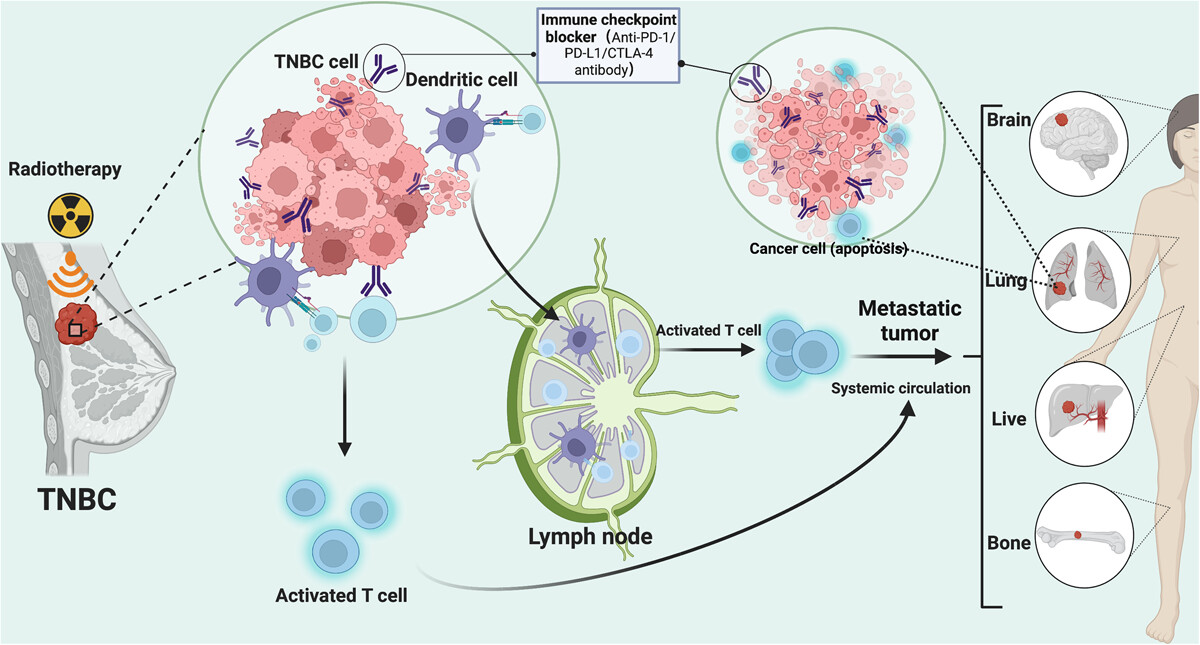MedComm-Biomaterials and Applications | Nanobiotechnology-mediated radioimmunotherapy treatment for triple-negative breast cancer

Open the phone and scan

Mechanism of radiotherapy-induced abscopal effect combined with immunotherapy. CTLA-4, cytotoxic T-lymphocyte-associated antigen 4; PD-1, programmed death 1; PD-L1, programmed death-ligand 1; TNBC, triple-negative breast cancer. Created by BioRender.com.
Breast cancer has become the most common and greatest threat to women's health in the world. As the most dangerous subtype of breast cancer, triple-negative breast cancer (TNBC) can lead develop drug resistance, resulting in poor therapeutic effects. The synergistic effect of radiotherapy and immunotherapy can not only improve the therapeutic effect of in situ TNBC but also induce the strong abscopal effect of radiotherapy to remove the tumor cells from the metastatic tumor and prevent tumor recurrence. However, many preclinical studies have pointed out that the application of radioimmunotherapy still has such problems as large toxic and side effects of drugs and asynchronous administration scheme. With the increasing popularity of nanobiotechnology in tumor therapy, there are more and more research results related to nanoparticles, such as inorganic nanoparticles, organic nanoparticles, and nanoparticle–hydrogel complexes in radioimmunotherapy. In this review, we briefly summarize the related clinical treatment methods of TNBC and review the related nanobiotechnology used in the preclinical studies of TNBC radioimmunotherapy. It is mainly characterized by the controlled release of drugs locally, enhanced radiosensitization, and avoidance of systemic toxicity. However, further studies are needed to improve the convenience and effectiveness, so as to explore new options for the clinical treatment of TNBC.
Article Access: https://doi.org/10.1002/mba2.32
More about MedComm-Biomaterials and Applications: https://onlinelibrary.wiley.com/journal/2769643x
Looking forward to your contributions.


